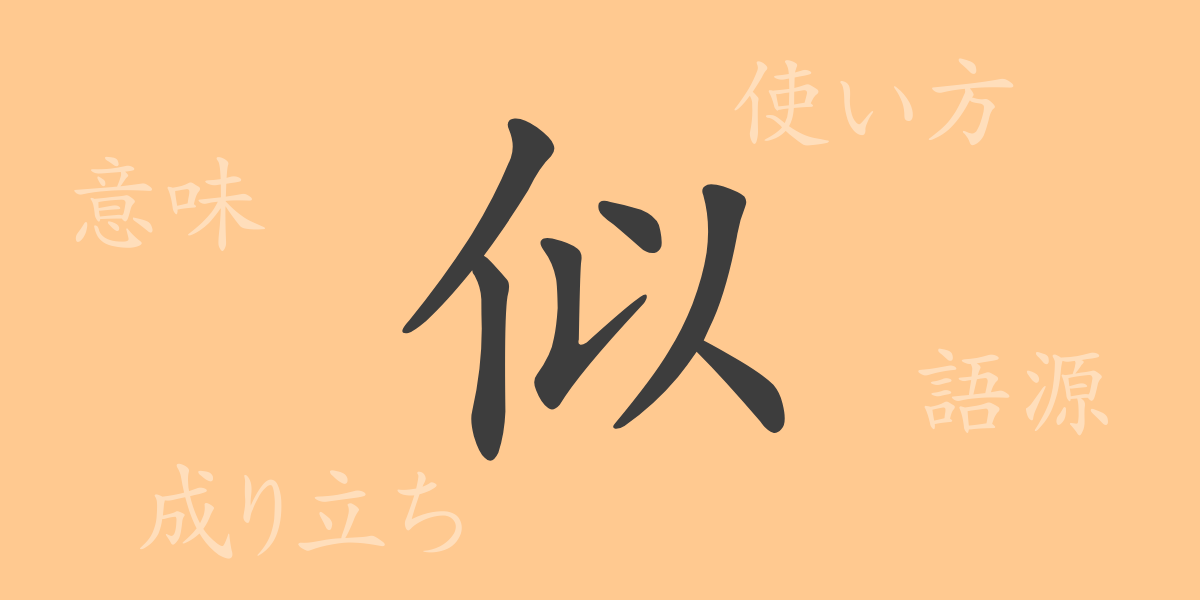The beauty of the Japanese language is reflected in its complex and rich characters. Each kanji has a history, and its form and meaning are deeply rooted in our words and culture, transcending time. This time, we focus on the common kanji “似(に),” exploring its origins, meanings, usage, and even related idioms and proverbs to uncover the charm of this character.
Origins of 似(に) (Etymology)
Exploring the origins of the kanji “似(に)” is essential for a deep understanding of its meaning. This character was created to symbolically represent a person resembling something. In ancient China, it was used to denote actions or appearances of a person that shared common characteristics with something else, marking the beginning of “似.”
Meanings and Usage of 似(に)
The kanji “似(に)” is read as “にる,” and it primarily means “to resemble” or “to be similar to.” This kanji is used to express when compared items share similar characteristics or traits. Specific usages include verbs like “似る(にる)” (to resemble), “似せる(にせる)” (to imitate), and “似合う(にあう)” (to suit).
Readings, Stroke Count, and Radical of 似(に)
The kanji “似(に)” is deeply integrated into the Japanese language, making it important to know its readings and structure.
- Readings: The on’yomi (音読み) is “ジ,” and the kun’yomi (訓読み) is “にる.”
- Stroke count: It consists of 7 strokes.
- Radical: The radical is 亻(にんべん) (person).
Idioms, Phrases, and Proverbs Using 似(に)
Idioms, phrases, and proverbs containing “似(に)” are frequently used in the Japanese language. These expressions help vividly convey emotions and situations. For example, “似非(えせ)” means something that looks real but is fake, and “似顔絵(にがおえ)” refers to a portrait that captures the features of a person’s face. The proverb “花に猿、似合わぬもの” humorously describes things that do not match well in appearance.
Conclusion on 似(に)
The kanji “似(に)” enriches our language with its form and meanings, providing deep expressiveness. This commonly used character is essential for indicating comparisons and similarities and serves as a foundation for many idioms and phrases. For learners of the Japanese language, understanding “似” is a crucial step toward deepening their comprehension of the language.

























